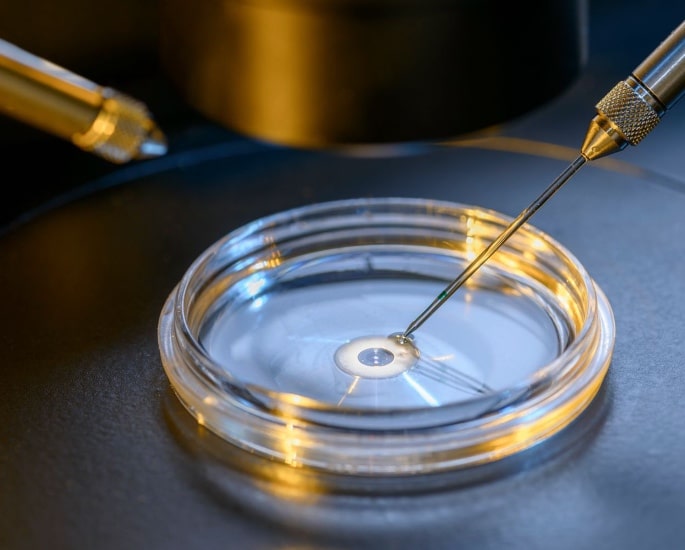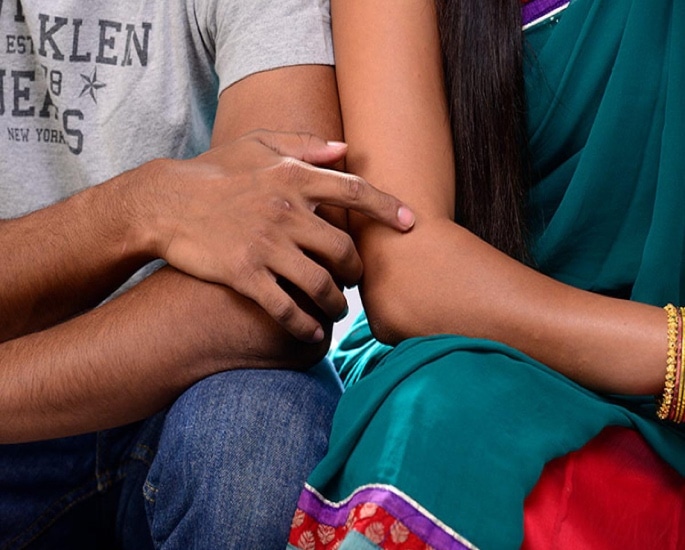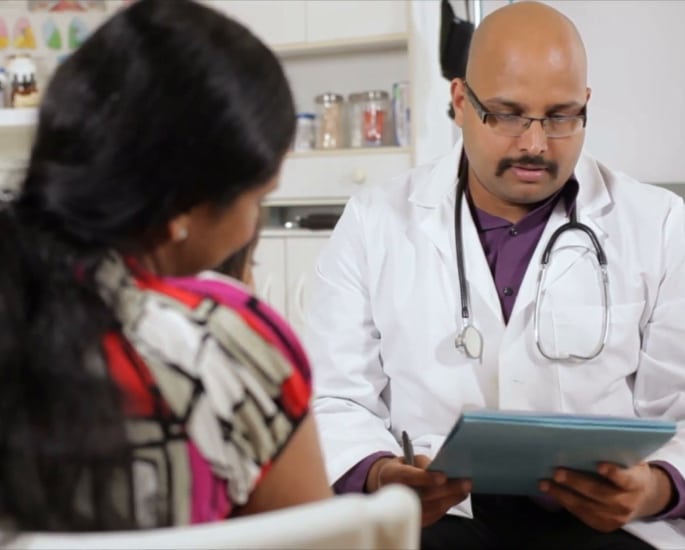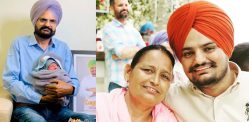"The mental impact it had was draining"
In Vitro Fertilisation (IVF) is one of the many fertility treatments available to help those who are unable to naturally conceive a child.
Infertility not only diminishes the ability to produce offspring, but it also carries with it embarrassment, stress and stigma. This is apparent for numerous South Asians, yet the women endure the burden.
However, these negative notions stem from Asian society’s possible lack of knowledge and attitude.
They believe having children is viewed as the goal for married couples. Thus, the inability to produce children is humiliating.
We explore what IVF is and the reasons why it is stigmatised.
What is IVF?
IVF is a method used to help women get pregnant. It involves removing an egg from the woman’s ovaries and being fertilised with sperm outside of the body.
This technique of fertilisation is carried out in vitro (in glass).
As a result, the successful embryos can then be transferred to the woman’s uterus in the hope of a pregnancy.
Process of IVF
There are six crucial steps required for this fertility treatment:
- Preventing the natural menstrual cycle – medication is provided in the form of an injection or nasal spray. This must be continued for two weeks.
- Increasing egg production – follicle-stimulating hormone (fertility hormone) must be injected for 10-12 days. This will help increase egg production in the ovaries.
- Monitoring progress – ongoing ultrasound scans are carried out to check the ovaries. Almost 38 hours before removing the eggs, a final hormone injection is used to mature the eggs.
- Removing the eggs – sedation is used to extract the eggs using a needle through the vagina. This can take up to 20 minutes.
- Fertilisation – the eggs and sperm are combined and checked after 16 to 20 hours. They are transferred into the womb after 6 days. Medication is given to prepare the lining of the womb.
- Reassigning the embryo – using a catheter (thin tube) the eggs are transferred into the womb.
Also, it is important to note that the number of egg transfers is dependent on your age.
For the men, their sperm will be collected when the woman’s eggs are extracted. To determine which are the most active sperm, their sample will be washed and spun.
Furthermore, it is advised that after two weeks a pregnancy test should be carried out to see if you are successful.
Despite this extensive and expensive procedure, IVF is not always successful. The possibilities of it being ineffective must be considered.
Distorted Understandings of Infertility
Conventionally women would have to take the blame for infertility, despite both genders being capable of being unproductive. This was done to preserve the male’s manhood.
Infertility Issues for South Asian Women states:
“There is a high incidence of polycystic ovary syndrome among South Asian women.”
Thus, this can cause them to become infertile. However, it goes on to mention:
“Men account for nearly half of the causes of infertility in couples.”
Yet this matter is kept strictly private. Mrs Hussain, a 59-year-old Pakistani woman, was under the misconceptions of infertility. She explains:
“As a young woman at the time, I believed there was something wrong with me. We had been trying to have children for over two years. Everyone was sure that it was something to do with me. After many tests, it turns out I was fine but my husband was not.”
It is crucial to note that South Asians are aware of medicinal influences in infertility as opposed to spiritual or supernatural factors. However, gender bias construct leans towards women.
Embarrassment
Infertility is a major cause for concern amongst the South Asian communities. Instantly, the finger is pointed at women as they are blamed for this.
Traditionally, women are associated with motherhood. For them, childbearing is culturally fixed.
This inflicted obligation can have serious health effects. Mrs Hussain was unable to conceive and struggled to cope. She stated:
“It was a tough time. Extended family and the wider community would gossip. My husband and I became known as the couple who could not have children. The mental impact it had was draining.”
She went on to explain how she felt:
“I kept blaming myself even though I knew it was not my fault. It was really embarrassing when other people would comment on how many years I had been married but I still had no children. I think they were indirectly questioning if my relationship with my husband was okay.”
However, embarrassment does not stop here. It branches out to the fertility treatment, in this instance IVF.
Many Asian women would struggle to talk to male practitioners about their unsuccessful attempts to try for a child. Usually, they would be expected to approach for medical help before their male counterparts.
The way society views infertility affects how the couple is perceived and this impacts behaviour towards IVF – it is a domino effect.
Hence, couples will do their best to keep this type of treatment concealed from the family and community.
Lack of Knowledge
Limited knowledge stems from ignorance of families and communities, embarrassment and lack of medical support. Therefore, this a predominant barrier faced by South Asians.
IVF is a well-known fertility treatment; however, many South Asians know very little about it.
This is because it is related to sexual matters which are not openly discussed.
As a result, IVF is stigmatised.
Also, matters are made more complicated when there is a language barrier. Non-English speaking South Asians struggle to communicate with health practitioners.
When discussing possible fertility treatments such as IVF, the technological terms would throw them off. As it is considered an embarrassing matter, their unwillingness to have an interpreter limits their understanding.
Additionally, the idea of another individual knowing their problems causes fear of confidentiality not being maintained.
However, health practitioners are also to blame. They provide limited support such as a lack of counselling to ethnic minorities.
This hindrance results in their misconception of what IVF is and how it could be beneficial. It is a medical treatment and should not be downgraded to such an extent.
Overall, it is apparent that education is required to help reduce the stigma surrounding IVF for South Asians. The inability to have children should not be viewed as a weakness.
Rather support and acceptance is need from family members as well as medical professionals.


































































